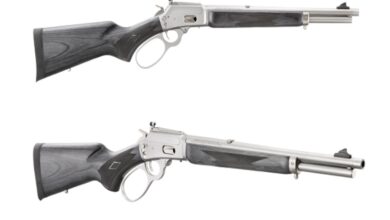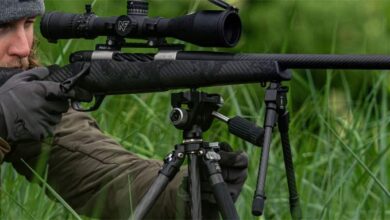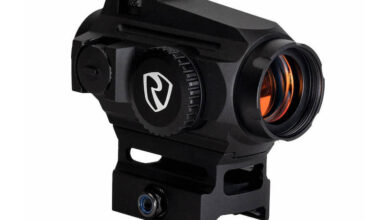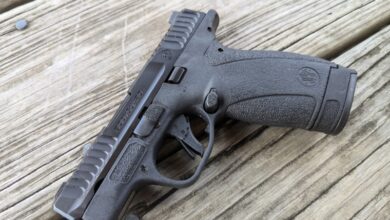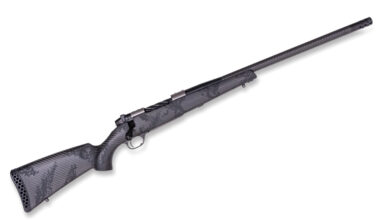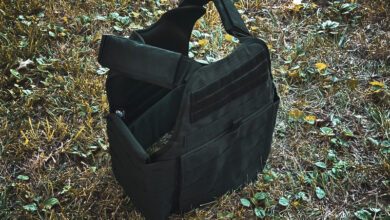Visiting the Rainer Regimental Museum in Salzburg: A Humbling Experience
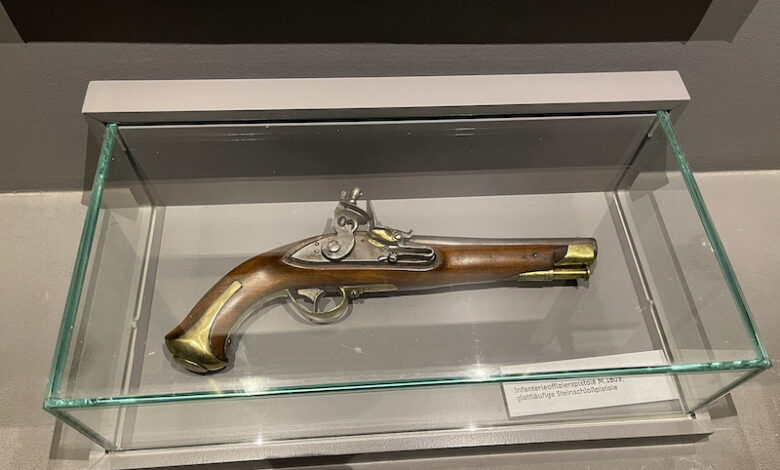
Tucked inside the formidable Fortress Salzburg, atop the cliffs above the city center, sits a hidden gem of a museum. Yes, the Hohensalzburg Fortress Museum itself is stellar, but the museum I’m referring to is the Rainer Regiment Museum, tucked inside one of the buildings in the complex. Not highly publicized, the museum came as a surprise to us as we walked the halls, going through the low doorway to discover the impressive collection of weaponry from the early firearms through World War II, mostly following the history of the Regiment.
The Rainer Regiment
So, what’s the deal with this particular unit? The Rainer Regiment has long been stationed at the Fortress, protecting the building and the town of Salzburg since the 1680s, when it was formed as a means of protection from new threats from the neighboring Ottoman Empire. Since that time, and through World War I, when it was disbanded, the Regiment was garrisoned in Salzburg since many of the recruits were from the local area in Austria. The museum itself opened in 1924 and has been in consistent operation since then, showcasing weaponry from the regiment and conflicts it was involved in.
A Hidden Gem
The museum spans eight rooms, varying in size, each with its own focus. For instance, the first area offers special exhibitions, the second showcases early military engagements and Napoleonic Wars, the third is the late 19th Century, and so on until the guest enters the final room displaying Military Heritage preservation efforts. While we only had a short time to visit the museum, so much was gleaned from it.
Walking into the first room of the museum, the visitor is greeted with the story of the unit and its extensive history. On the walls is a photo of the commander, Rainer, along with different early weapons and uniforms of the regiment. Since the unit spanned a few centuries, there are plenty of examples to see and learn about. On the walls of the first room are well-preserved weapons like a model 1748 smooth-bored musket, a smooth front loader with ignition lock model 1842 rifle, and Model 1798 cavalry pistols, in addition to examples of unit uniforms during that same period and ammunition.
The second room included many examples of rifles and pistols from the mid-to-late-1800s, with many firearms from different engagements. A few that I found particularly interesting were the infantry rifles Lorenz Model 1854 and 1867. The latter rifle, the Wänzel rifle, was a conversion of the Lorenz 1854 from a front-loading system to a rear-loading system using the Wänzel cartridge and was used heavily by the Austrian Empire until the late 1800s when it was replaced by the early repeating rifles, the 8mm Mannlicher Model 1888. In the same display as the Mannlicher M1888 is an 8mm army revolver from 1898. This revolver used the Gasser 8mm cartridge and was used by the Austro-Hungarian forces through World War I.
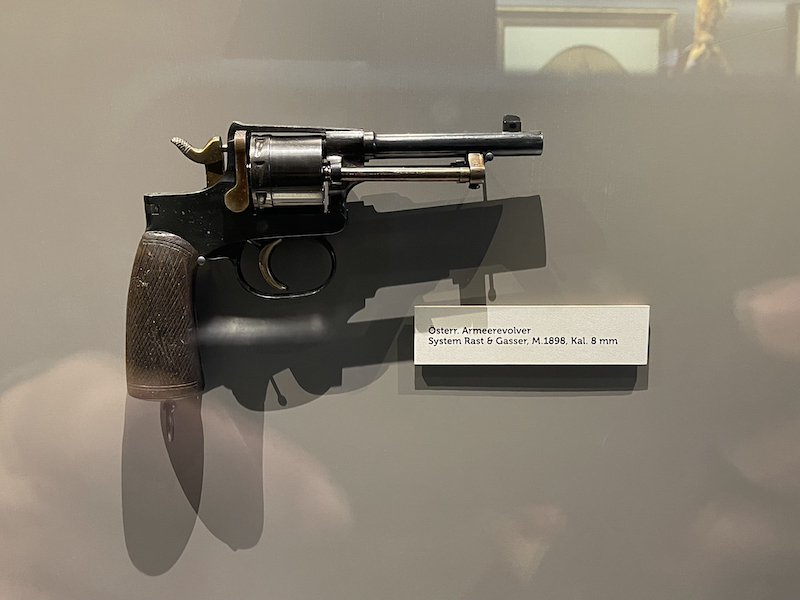
Other Collections
In that same area was a highlight of the museum for my son, the Schwarzlose Model 07/12 8mm Austrian machine gun displayed with a wooden ammunition box, among other items. This machine gun, used by the Austro-Hungarian forces throughout World War I, had a water-cooled barrel and was a belt-fed machine gun designed for the forces by Schwarzlose in 1907. The design of the weapon was simpler when compared to other Maxim-designed weapons of the time and, thus, was cheaper to produce. During the War, the weapon would have a 400-580 round cyclic rate, depending on the internal configurations.
Other interesting rifles within the first half of the museum are the Austrian Steyr M1895 sniper rifle in the 8x50mm R caliber, a Russian Mosin-Nagant Model 1891 infantry rifle chambered in 7.62x54R, and an Italian Fiat-Revelli machine gun chambered in 6.5mm. I’m sure I missed other interesting firearms, but the museum was so full it was hard to list them all.
The museum’s mission doesn’t stop at preserving the weaponry used by the unit. It features specimens of historically significant weaponry as well, from suits of armor to early firearms and swords. In the lower section of the museum are large rooms holding impressive displays of all sorts of weaponry and accessories from the time the firearm was first invented onward.
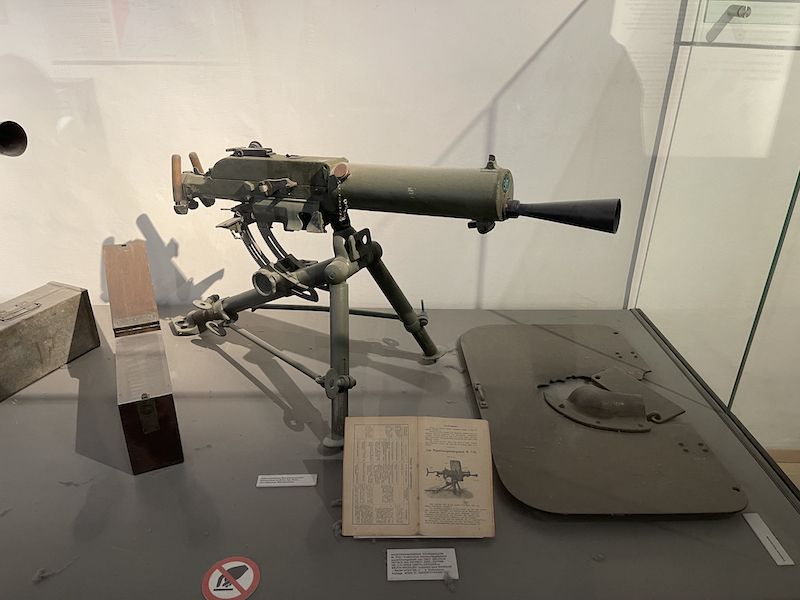
Stepping Back In History
One display in the lower section showed gorgeously engraved wheellock firearms from the 16th and 17th centuries, including an example of a pistol and axe combination unit. The explanation next to the wheellock guns stated the first two firearms, the rifle and pistol, were probably used by the commander of the bodyguard to protect Archduke Wolf Dietrich von Raitenau during his tenure in Salzburg around the end of the 16th century. The other interesting wheellock guns were the 2- and 4-barreled pistols from the 16th and 17th centuries.
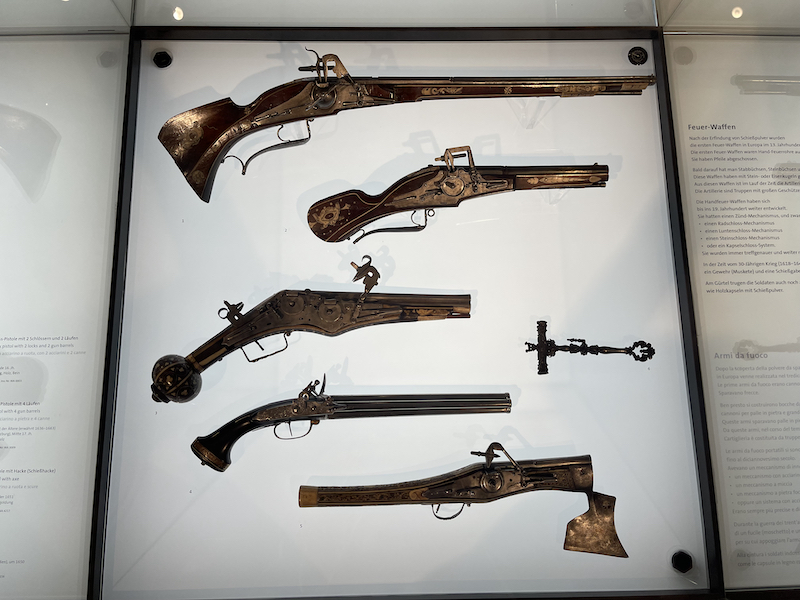
One sign in the museum helped explain the evolution of firearms from the advent of gunpowder weapons in the 13th century. Initial weapons would fire arrows from barrels, and the design would morph to include other barrel shapes, like rod barrels and stone barrels, to shoot stone or iron projectiles. This would see the start of the artillery units within military forces, according to the display. The firearms would start to become handheld with ignition mechanisms and include designs of the wheellock, matchlock, flintlock, or caplock mechanisms, depending on the needs of the user.
That explanation would lead to another display with early examples of rifles from the 15th through the 17th century, starting with a rod-shaped barrel, which is one of the earliest forms of stationary cannons from the 16th century. These weapons, along with the explanations, show how weaponry evolved over the centuries from rudimentary to muskets, double-lock guns, and accessories that would be used along with them, like a bandolier and a powder flask.
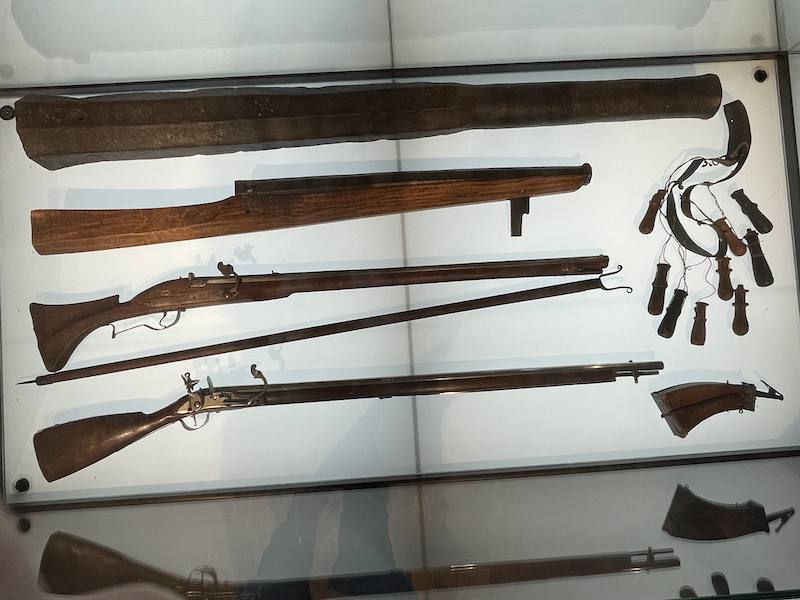
A Great Find
The museum was such a great find, and given the chance, we could have easily spent most of the day wandering its displays and learning more. In leaving, I reflected on the mission of the unit museum for the preservation of its history.
“Heritage preservation means preserving and passing on to future generations all that which has been handed down to us by our forebears. Looking after tradition is the task of descendants and encompasses all areas of human existence, such as general knowledge, convictions and insights, conventions and customs. This has been an essential aspect in coping psychologically with personal experience for all participants in military conflicts.”
I hope that those who visit this museum or other military museums gain insight not just into the weaponry but also into the mindset of those who fought and made the ultimate sacrifice in serving.
The post Visiting the Rainer Regimental Museum in Salzburg: A Humbling Experience appeared first on The Mag Life.
Read the full article here

